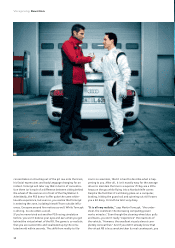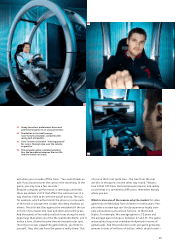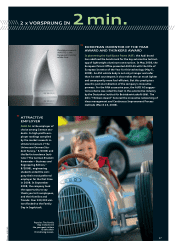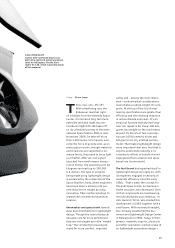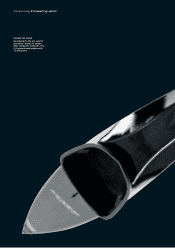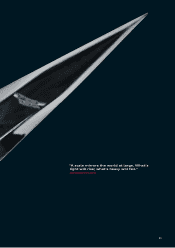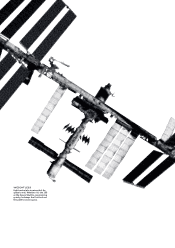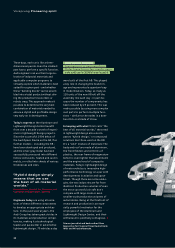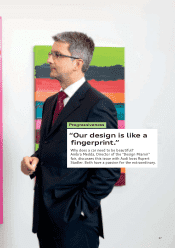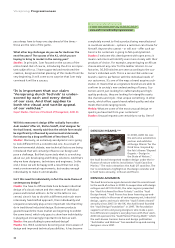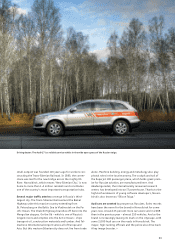Audi 2008 Annual Report Download - page 27
Download and view the complete annual report
Please find page 27 of the 2008 Audi annual report below. You can navigate through the pages in the report by either clicking on the pages listed below, or by using the keyword search tool below to find specific information within the annual report.
here under Timm’s direction. Team
members from all disciplines are mak-
ing important contributions to tech-
nological progress; their thinking and
experimentation extend across de-
partmental boundaries. Experts
developing new technologies and
processes work in direct contact with
the project managers developing new
vehicles. With everything taking place
under the same roof, the lines of com-
munication are shortened.
At first, the idea of using lightweight
aluminum – which weighs about a
third less than steel – on a large scale
in automobile production was met by
most experts with skepticism. But
Timm worked persistently to over-
come all objections. For a creative
thinker like him, one thing was clear
from the start: Simply duplicating the
existing steel structure in aluminum
would not be a recipe for success –
after all, such a new construction
would be substantially more expen-
sive. So other advantages had to be
weighed – for instance, finding new
ways to reduce the number of parts
required. “The bottom line is that
30 percent fewer parts means 30 per-
cent less logistics and 30 percent
fewer joins. So we immediately took
another look at our production
processes and sought new ways to
optimize our design geometry by se-
lecting the most suitable materials,”
recalls Timm. AUDI AG has already
received numerous awards for this
pioneering achievement; most re-
cently by winning the 2008 European
Inventor of the Year Award for its
Space Frame technology.
Today’s challenges resemble the
Olympic motto “faster, higher, fur-
ther.” Translated into the language of
materials experts, this means: sta-
bler, stronger, lighter. New aluminum
alloys, for instance, are intrinsically
stronger and can withstand greater
mechanical loads. Conversely, engi-
neers are able to design metallic com-
ponents that are thinner throughout,
thereby reducing weight further. “We
don’t just focus on the basic material:
We also find ways to manufacture it
industrially and therefore more eco-
nomically,” emphasizes Dr. Lutz-Eike
Elend, Head of Lightweight Design
Technology and Process Development.
Aluminum has long since ceased to
be the only interesting material for
building auto bodies. Audi specialists
are working with plastics, magnesium
alloys and steel alloys. The latest
trend in airframe design is using car-
bon fiber composite (CFC) materials,
in which carbon fibers of different
lengths and orientations are em-
bedded in a mush of plastic and then
baked in an oven. 20 percent of the
A380 Super-Airbus is made out of CFC
and up to 50 percent of the latest
Boeing 787 is made of this material.
Automakers don’t intend to take a
back seat in this area: One option on
the Audi R8 supercar is to have the
sideblades made from this high-tech
material. This and other bold ideas
from Technical Development experts
are creating new challenges for
Michael Ernst, Head of the Technical
Center, and his team, whose job it is
to implement them at the Aluminum
and Lightweight Design Center.
Tricky problems invariably arise when
different materials have to be meshed
together. “We make every effort to
combine even ‘incompatible’ mate-
rials,” says Ernst. “Basically, anything
is doable. But in order to ultimately
shorten the cycle times, our lab re-
sults have to translate it into actual
automobile production.”
“We make every effort to combine even
‘incompatible’ materials.”
Michael Ernst, Head of the Technical Center of the Aluminum and
Lightweight Design Center, AUDI AG
Pioneering spirit Vorsprung
23



